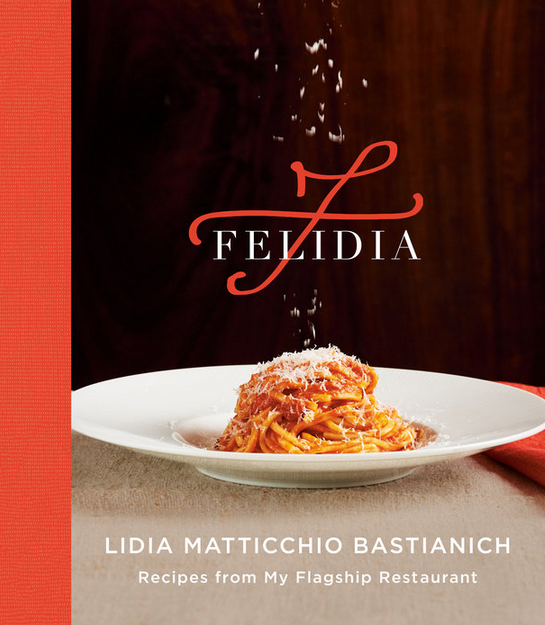Serves 4 TO 6
Notes
This is a classic dish from Rome that none of my grandkids can resist. Amatriciana usually contains guanciale, or jowl bacon, which is very flavorful and traditional in the Italian rendition of this recipe, and tomato, but here Chef Nicotra adds a pestata of onion, celery, and carrots with the bacon. Romans will often argue whether this sauce is made with or without the onions. I like it with the onions, but I do use an immersion blender to pass it, so that you don’t have the texture of the onions. Instead, I like the texture of the crispy bacon served on top.
Ingredients
- FOR THE PASTA
- 2 cups all-purpose flour, plus more for rolling the dough
- ¼ cup extra-virgin olive oil
- FOR THE SAUCE
- Kosher salt
- 1 small onion, cut into chunks
- 1 small carrot, cut into chunks
- 1 small stalk celery, cut into chunks
- 3 cloves garlic, crushed and peeled
- 2 tablespoons extra-virgin olive oil, plus more for drizzling
- 3 thick slices bacon (about 4 ounces), cut into ½-inch pieces (can substitute prosciutto)
- ¼ teaspoon crushed peperoncino flakes, or to taste
- One 28-ounce can whole Italian plum tomatoes, preferably San Marzano, crushed by hand
- ¼ cup chopped fresh Italian parsley
- ½ cup freshly grated Grana Padano, plus more for serving
- ½ cup freshly grated Pecorino Romano, plus more for serving
Directions
For the pasta, put the flour in the work bowl of a food processor, and pulse several times to aerate. In a spouted measuring cup, beat the olive oil and ½ cup cold water together with a fork. With the processor running, add the wet ingredients to the flour, and process until the dough forms a ball around the blade; add a little more water if it is too crumbly, a little more flour if it is too loose.
Once the dough forms a ball, knead in the processor until smooth, about 20 to 30 seconds. Flour your work surface, dump the dough out, and knead a few times by hand to bring it together in a smooth ball. Wrap in plastic wrap, and let it rest at room temperature for 30 minutes.
Once the dough has rested, cut it into six pieces, keeping the pieces you are not immediately working with covered as you work. Roll each piece by hand on a floured work surface (or through a pasta machine set to the next-to-last setting) to an ⅛-inch thickness.
If using a chitarra, cut the sheets to fit the dimensions of the strings, and press the trimmings together to roll for another sheet. If using a chitarra, place a floured sheet of pasta on it, and use a rolling pin to roll and press the dough through the strings. Gather the pasta that falls through, and form it into floured nests on a floured baking sheet. Repeat with the remaining sheets of dough. (You can also cut the dough by hand: roll out all of the sheets, then cut into ⅛-inch strands with a sharp knife or pizza wheel.) Let the pasta dry on the baking sheet while you make the sauce.
Bring a large pot of salted water to a boil for the pasta. Combine the onion, carrot, celery, and garlic in a food processor, and pulse to make a coarse vegetable paste or pestata. Heat the olive oil in a large skillet over medium heat. Add the bacon, and cook until almost crisp, about 3 minutes. Add the pestataand cook, stirring occasionally, until it dries out and begins to stick to the bottom of the pan, about 6 minutes. Season with salt and the peperoncino.
Add the tomatoes. Rinse out the can with 2 cups pasta water, and add that as well. Bring to a simmer, and cook until the sauce is thick and flavorful, about 15 to 20 minutes.
When the sauce is ready, gently shake out any residual flour from the pasta nests, and add the nests to the boiling water. Cook the pasta until al dente, 2 to 3 minutes. Remove with tongs to the simmering sauce. Add the parsley and a drizzle of olive oil, and toss to coat the pasta with the sauce, adding a splash of pasta water if it seems dry. Remove the skillet from the heat, sprinkle with the grated cheeses, toss, and serve. If plating individually, use the tongs to twirl each portion of pasta into the shape of a bird’s nest. This will keep the pasta warmer and make for an attractive presentation. Spoon some sauce over the top of the pasta, and serve with grated cheeses.

